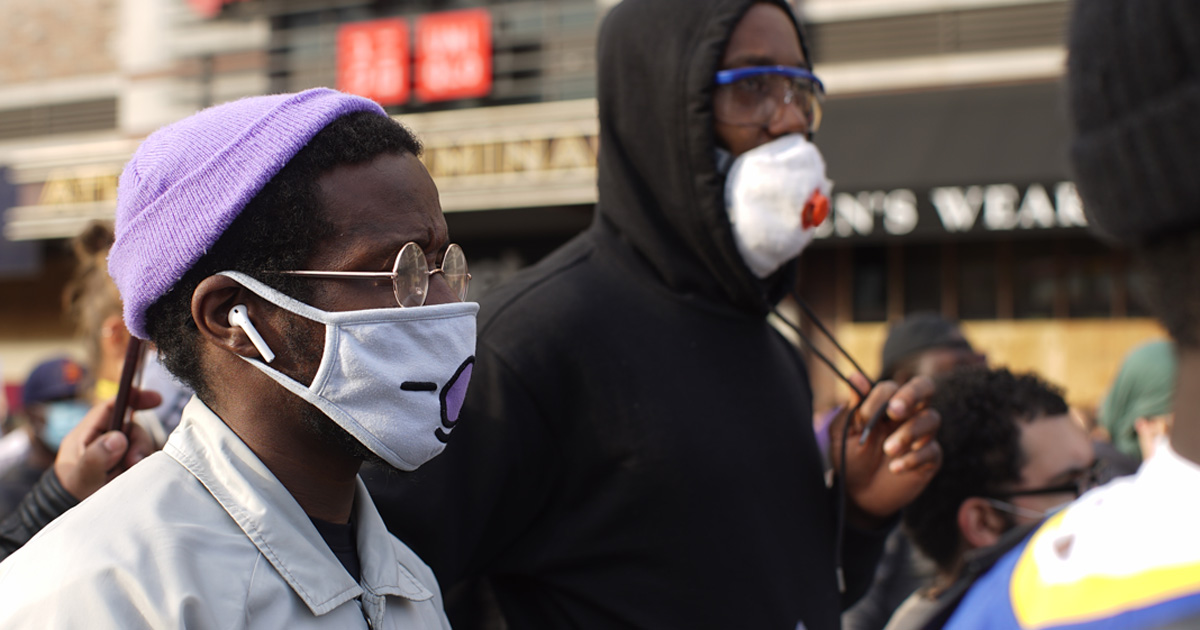
Black Africans, Coloureds and Males More Likely to Die in Pandemic in South Africa
The National Institute for Communicable Diseases (NICD) has recently revealed the racial divide in COVID-19 deaths, with Blacks and Coloureds more likely to succumb to the disease in South Africa. “Race is for the first time reported to have an association with in-hospital mortality, with a higher risk of mortality in individuals who were Black […]

The National Institute for Communicable Diseases (NICD) has recently revealed the racial divide in COVID-19 deaths, with Blacks and Coloureds more likely to succumb to the disease in South Africa.
“Race is for the first time reported to have an association with in-hospital mortality, with a higher risk of mortality in individuals who were Black African or Coloured, compared to White individuals,” the NICD said.
The institution said a similar trend was observed in studies in the United States, where Blacks, Hispanics, and those from lower socio-economic status are more likely to die of COVID-19.
The NICD’s latest report is based on 49 218 COVID-19 admissions reported from 380 facilities, 144 and 236 in the public and private sectors, respectively, between 5 March and 8 August 2020.
“There was an increase of 5 177 new admissions since the last report, and 40 additional hospitals – 35 public sector and five private sector – reporting COVID-19 admissions,” the NICD said.
The majority of those admitted were in four provinces: 15 782 (32%) in the Western Cape, 14 122 (29%) in Gauteng, 7 824 (16%) in KwaZulu-Natal and 4 306 (9%) in the Eastern Cape.
“Admissions in the Western Cape, Eastern Cape and Gauteng have decreased, and there are indications of admissions slowing… in the other provinces over the past three weeks,” the NICD said.
Meanwhile, factors associated with in-hospital COVID-19 fatalities were also linked to older age groups, males and those with underlying conditions.
These include hypertension, diabetes, chronic cardiac disease, chronic renal disease, malignancy, HIV, tuberculosis and obesity.
“Trends in case fatality ratio (CFR) over time and provincial differences may be affected by many factors, such as hospital admission criteria, closing cases timeously, testing criteria in different provinces, and the severity of illness in admitted cases.”
The report also revealed that compared to the Western Cape, individuals hospitalised in the Eastern Cape and Free State provinces were more likely to die in-hospital, while individuals in Mpumalanga province were less likely to die.
Age of Patients Dying from Covid in South Africa
The study found that the median age of patients who died was 62 years and 49 years for those discharged alive.
“There were 39 (0.5%) deaths in children aged younger than 18 years, with most of these deaths in children with serious underlying comorbid conditions,” the NICD said.
Meanwhile, there were 511 (6.7%) deaths in patients younger than 40 years, while the CFR was higher in males (21.2%) than females (15.9%).
“In all age groups, except for those younger than 20 years, hypertension and diabetes were most commonly reported comorbidities among patients who died.
“In addition, in patients younger than 60 years, HIV, tuberculosis and obesity were common, while in those older than 60 years, asthma or chronic pulmonary disease and chronic renal disease were common comorbidities,” the report said.
Covid-19 Hospital Admissions in South Africa
Of the 49 128 admitted individuals, 6 723 (13.7%) were currently in hospital, 34 186 (69.6%) were discharged alive, 481 (1.0%) were transferred out to either higher-level care or step-down facilities. Also, 7 655 (15.6%) died in hospital and 83 (0.2%) died after discharge from hospital.
“There were 1 028 additional deaths since the last report,” said the NICD.
Coronavirus in SA: Public and private sectors
In the first few weeks of the outbreak, most deaths were reported in the private sector, while most fatalities were recorded in the public sector since week 17.
“However, since week 27, again most deaths were reported in the private sector. The CFR was higher in the public health sector (24.5%) than in the private health sector (15.5%).”
The NICD has also noted a decrease in reported COVID-19 admissions for the past three weeks.
The NICD’s DATCOV is a sentinel surveillance system and does not include all hospitals with COVID-19 admissions and may not be truly representative of hospital admissions for COVID-19 throughout South Africa.
“DATCOV only reports hospital-based admissions and deaths and therefore does not include deaths occurring outside hospitals.”
The institution said the availability of reliable surveillance data is of critical importance to gain a better understanding of the epidemiology of COVID-19 in South Africa, to monitor the COVID-19 pandemic and respond with adequate control measures. – SAnews.gov.za
